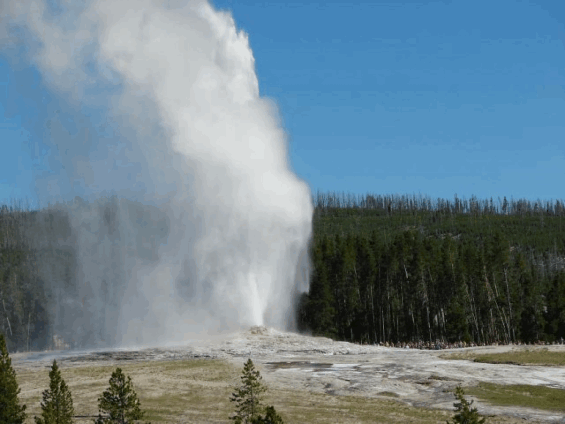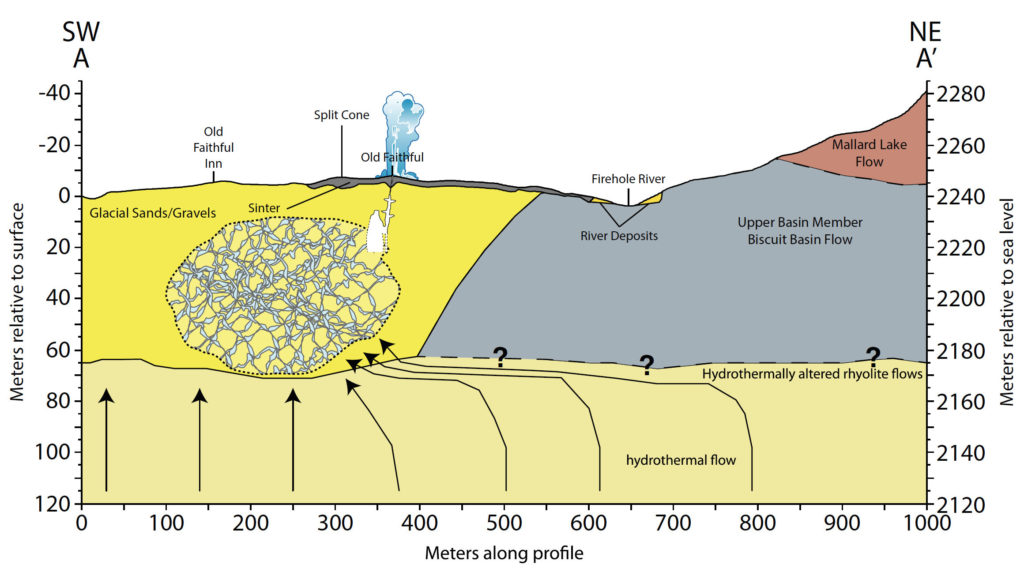Researchers in Yellowstone National Park have discovered the heart of Old Faithful Geyser, the park’s most famous feature.
When we say “heart,” of course, we don’t mean the muscle but the source of life—in this case, the reservoir of water that keeps Old Faithful erupting on a regular schedule.
According to Phys.org, the research, published in Geophysical Research Letters, is the culmination of over a decade of planning and research.
Doctoral student Sin-Mei Wu is listed as the first author, followed by Kevin M. Ward, Jamie Farrell, Fan-Chi Lin, Marianne Karplus and Robert B. Smith. Farrell, Lin and Smith have been studying Yellowstone’s geothermal system for a long while; they’re some of the researchers behind our new understanding of Yellowstone’s magma reservoirs.
Researchers were able to find the heart of Old Faithful Geyser using special seismometers—six inch high canisters you can just stick in the ground, to paraphrase Smith— to track tremors. Using these tremors and comparing them to Old Faithful’s eruption cycle, researchers were able to map the area underlying Old Faithful. You can see “the heart” above, in a diagram created by Wu. From Phys.org:
In 2015, with the new instruments, the Utah team deployed 133 seismometers in the Old Faithful and Geyser Hill areas for a two-week campaign.
The sensors picked up bursts of intense seismic tremors around Old Faithful, about 60 minutes long, separated by about 30 minutes of quiet. When Farrell presents these patterns, he often asks audiences at what point they think the eruption of Old Faithful takes place. Surprisingly, it’s not at the peak of shaking. It’s at the end, just before everything goes quiet again.
After an eruption, the geyser’s reservoir fills again with hot water, Farrell explains. “As that cavity fills up, you have a lot of hot pressurized bubbles,” he says. “When they come up, they cool off really rapidly and they collapse and implode.” The energy released by those implosions causes the tremors leading up to an eruption.
The other surprising conclusion, according to Wu, is how large the Old Faithful reservoir is; it can hold approximately 300,000 cubic meters of water (over 79 million gallons) and has a diameter of about 200 meters. For comparison, during an eruption, Old Faithful discharges about 30 cubic meters of water, or nearly 8,000 gallons.
You can read the full study here.
According to Phys.org, the researchers plan to continue researching Old Faithful. The same team conducted a survey in November 2016 and are planning to conduct more studies later this year. Wu will look at how air temperature affects subsurface structure while Farrell will see whether you can predict how earthquake waves will travel through the Greater Yellowstone area. Finally, Smith will be spearheading a study of Norris Geyser Basin modeled on the Old Faithful study.
Old Faithful Geyser is a popular candidate for geologic mapping, not only because it’s so iconic but also because it’s an anomaly when it comes to Yellowstone’s geysers.
 Yellowstone Insider Your Complete Guide to America's First National Park
Yellowstone Insider Your Complete Guide to America's First National Park







You must be logged in to post a comment.